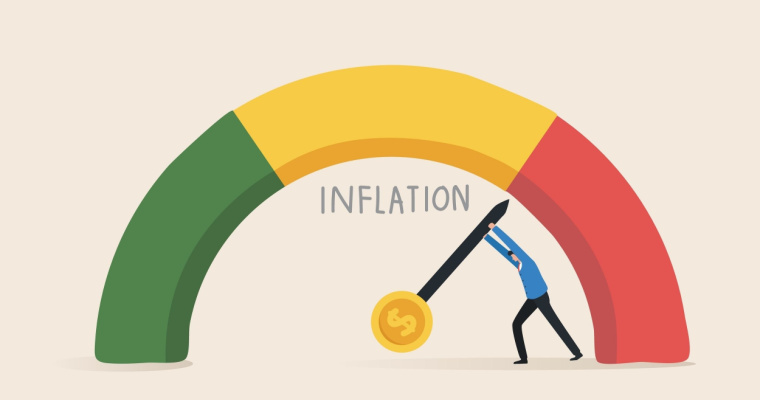MUDRA Loan – Pradhan Mantri Mudra Yojana: Interest Rates, Eligibility and Apply Online

MUDRA is an abbreviation for Micro-Units Development & Refinance Agency. Also known as the Pradhan Mantri MUDRA Yojana, it is a credit-funding scheme that provides financial aid to enterprises through a MUDRA loan. It sanctions loan amounts ranging from Rs. 50,000 to Rs. 10 lakh, based on the category. Some benefits of a MUDRA loan include low or no processing fees/foreclosure charges and no collateral requirement.
Many micro, small, medium or large enterprises in India may have the potential to contribute significantly to the economy, but are struggling due to low funding. This is where Pradhan Mantri MUDRA Yojana (PMMY) can help. Read on to know how to apply, benefits, interest rates, eligibility criteria and other details.
What Is MUDRA Loan or Pradhan Mantri MUDRA Yojana?
The Government of India launched the PM MUDRA Yojana on April 8, 2015, to encourage innovation and funding in Indian small-scale companies. The scheme funds eligible companies from both profit and non-profit sectors.
The scheme envisions a world-class manufacturing infrastructure in the country. The benefits fore-visioned include decreased unemployment, increased per capita income, increased innovation and a strengthened economy.
Purpose of the MUDRA Loan scheme
The primary aim of the MUDRA yojana is to fund small-scale companies and lift the entrepreneurial spirit in the country. Other purposes of the scheme include:
- Facilitating shopkeepers, vendors, traders, and other service providers.
- Funding equipment purchases for small businesses.
- Streamlining day-to-day business operations with working capital loans.
- Sanctioning loans for the purchase of transport vehicles
- Funding agri-allied non-farm activities that create income. These include activities like bee-keeping, poultry farming, pisciculture, etc.
- Financing equipment like tractors, tillers, etc.
Types of Companies Eligible for MUDRA Loan
The companies eligible for a MUDRA loan (up to Rs.10 lakh) under the scheme include Non-Banking Financial Companies (NBFCs), microfinance institutions, commercial banks, and railway recruitment boards.
Types of Industries Eligible for MUDRA Loan
The MUDRA scheme is a comprehensive plan that covers small-scale businesses and MSMEs. The enterprises eligible for loans under the scheme include small business vendors, local shopkeepers, repair and restoration shops, people associated with the agriculture sector, and food production businesses. Artisans, handicraft men, small-scale manufacturing setups, truck owners, and other service providers can also apply for these loans.
Types of MUDRA Loan Products
MUDRA loan schemes are divided into three major categories. These are Shishu, Kishor, and Tarun. Below are the permitted loan amounts for each category:
- Businesses in the Shishu category are eligible for loans up to Rs.50,000.
- The loan amount sanctioned under the Kishor category ranges from Rs.50,000 to Rs.5 lakh.
- Businesses in the Tarun category can avail of loans between Rs.5 lakh to Rs.10 lakh.
Features of MUDRA Loan
The features of the unique MUDRA loans offered by the Government are as below:
- The loan can be used as working capital for the company.
- These loans primarily focus on manufacturing businesses, trading companies, and service providers.
- Both new companies and existing businesses can avail of loans under the scheme.
- MUDRA loan duration varies from 3 to 5 years.
- Businesses can apply for MUDRA loans online through a fully functional website or app facilitated by the Government.
- Companies can use the loan amount any way they want for the business operation. Some uses include equipment purchase, machinery, hiring, working capital, marketing, restructuring, etc.
- These loans do not require collateral or third-party security.
- They cater to all types of borrowers through the three categories.
Also Read: Top 5 Government Business Loans In India: Eligibility & How To Apply?
Benefits of MUDRA Loan
The Pradhan Mantri MUDRA Yojana (PMMY) is a scheme that benefits businesses from both rural and urban areas. Here are a few benefits of the MUDRA scheme:
- Both profitable businesses and non-profits can avail of the loan.
- Startups and reward innovation are encouraged with funding at the right time.
- MUDRA loan interest rates are affordable and can be availed at minimal processing fees.
- The Government works as the guarantor for the borrower and will bear the responsibility of loss if the borrower cannot repay the bank.
- Borrowers in areas without basic banking facilities can also access financial aid through the MUDRA loan scheme.
- While the tenure is 3-5 years, borrowers can avail of extensions up to 7 years.
- Interest rate subsidies are available for women entrepreneurs.
- Refinancing options are also available.
- The Atmanirbhar Abhiyan has announced a subsidy up to Rs.1,500 crore for MUDRA Shishu borrowers.
- Fast borrowers are also eligible for a discount of 2% on the interest rate.
Eligibility Criteria for Businesses to Apply for MUDRA Loans
Existing or prospective businesses can avail of MUDRA loans from nationalized banks, private banks, microfinance institutions, small finance banks, or regional rural banks. Any Indian citizen with a business plan in mind can apply for a MUDRA loan subject to the following MUDRA loan eligibility criteria:
- The amount required must be below Rs.10 lakh
- The business must entail service sector activities, trading activities, or manufacturing
- The applicant must be between 18- 65 years of age
- The applicant must furnish all the necessary documents to process the loan
Also Read: How To Get A Business Loan for Startups in India?
Documents Required to Apply for MUDRA Loan
Both offline and e-MUDRA loan applicants need to furnish the following documents to avail of a loan under the MUDRA scheme.
- A photo identity proof issued by the Government of India.
- Address proof issued by GOI. This includes Aadhaar cards, voter’s ID cards, utility bills, passports, etc.
- 2 passport size photographs.
- Caste certificate, if applicable.
- Quotation of equipment and other items that need to be purchased using the loan amount.
- Duly filled out application form in case of offline applications.
Scanned copies of these documents must be uploaded when applying for a MUDRA loan online.
Banks/NBFCs offering MUDRA Loan
Under the directive of the RBI, the following banks offer MUDRA loans:
- Axis Bank
- Bank of India
- Bajaj Finserv
- Bank of Baroda
- Bank of Maharashtra
- Central Bank of India
- Canara Bank
- HDFC Bank
- IDBI Bank
- ICICI Bank
- Indian Bank
- IDFC first bank
- Lendingkart Finance
- Karnataka Bank
- Kotak Mahindra Bank
- Punjab National Bank
- State Bank of India (SBI)
- Syndicate bank
- Saraswat Bank
- Tata Capital
- Yes Bank
- Union Bank of India
MUDRA Loan Interest Rates
One of the most important MUDRA loan details that prospective borrowers seek is the interest rate. The profile of the applicant and business requirements determine the interest rate they need to pay for their MUDRA loan. The lending institutions decide the final interest rate based on their guidelines. It typically ranges between 11.75% to 26% per annum.
How to Apply for a MUDRA loan?
The application process for a MUDRA loan varies slightly based on the lender. Once you have chosen an institution/ bank from the MUDRA loan bank list, download the form and fill in the details. Then visit the nearest branch, submit the application form, and fulfil the loan formalities. To avail of an e-MUDRA loan, you must complete the application online through the bank’s website. The lender will approve the loan after receiving and verifying all documents. After getting approval, you will receive the amount within a few working days.
The MUDRA Card
You will need to open a bank account before getting approval for the MUDRA loan. The bank will credit your sanctioned amount to your loan account. To withdraw the money from this account, you can use the MUDRA card, which is a debit card.
Final Word
The Pradhan Mantri MUDRA Yojana, in collaboration with the “Make in India” campaign, aims to encourage the country’s entrepreneurial spirit and business while facilitating investment and skill development. If you have a business idea that’d do better with funding, you can apply for a MUDRA loan and fulfil your dreams!
In case you are not eligible for a MUDRA loan, you can apply for Navi personal loan and get up to Rs.20 lakh loan with an interest rate starting at 9.90% and benefits like 100% paperless and zero processing fee. Download the Navi app now!
FAQs
Ans: It usually takes 7-10 business days for banks or NBFCs to assess your application, verify your documents, and approve a MUDRA Loan.
Ans: The government acts as a guarantor for the loan amount. A MUDRA loan is a collateral-free loan, and you do not need to submit any 3rd party guarantee to secure a loan.
Ans: Yes, the MUDRA loan is beneficial for women. The scheme also offers additional discounts if women have over 50% share in the organization.
Ans: Yes, existing businesses and salaried people trying to start their venture need to submit proof of ITR (Income Tax Returns).
Ans: MUDRA Loans sanction a maximum of Rs. 10 lakh for businesses. However, refinancing options are available based on the rules of lending institutions.
Before you go…
- Looking for instant ? personal loans 24*7 anywhere, anytime? Install the Navi app now!
- Or, maybe you’re looking to buy that house you’ve been eyeing ? and
you need a loan of up to Rs.10 crore. Install the Navi app now and get instant in-principle approval right away! Interest rates starting at 6.95% p.a. - How about an affordable health insurance policy ?⚕️ starting at a monthly premium of just Rs. 241? Install the Navi app now and get your policy in under 2 minutes.
- Instead, want to put your savings into action and kick-start your investment journey ? But don’t have time to do research. Invest now with Navi Nifty 50 Index Fund, sit back, and earn from the top 50 companies.
Mutual Fund investments are subject to market risks, read all scheme-related documents carefully.
This article has been prepared on the basis of internal data, publicly available information and other sources believed to be reliable. The information contained in this article is for general purposes only and not a complete disclosure of every material fact. It should not be construed as investment advice to any party. The article does not warrant the completeness or accuracy of the information, and disclaims all liabilities, losses and damages arising out of the use of this information. Readers shall be fully liable/responsible for any decision taken on the basis of this article.

Customer’s Feedback
No comments found.What is Primary Deficit? – Example, Formula & Measures
What is a Primary Deficit? Primary Deficit is the difference between the current year’s fiscal... Read More »What is Financial Ratio Analysis? – Objectives, Types and Uses
Ratio analysis is a process that allows people to assess the financial health of a company. Using t... Read More »Treasury Management – Its Functions, Types and Benefits
Even the most well-funded business can run into huge losses if it does not have the resources to fu... Read More »How Anti Money Laundering Combats Financial Crime?
Anti Money Laundering (AML) is a system of rules, laws, regulations, and procedures that financial ... Read More »What is Salvage Value and Why is it Useful?
Salvage value, also called scrap value, is the value of a specific asset after its useful life. In ... Read More »Key Difference Between Factoring and Forfaiting in Trade Finance
Factoring and forfaiting have grown in prominence as major sources of export financing. For the uni... Read More »What is Factoring and its Importance in Financial Management?
Factoring is a practice in which a company buys the accounts receivable of another company at a dis... Read More »What is Budget Surplus: Its Effects, Advantages and Impact with Examples
When the revenue of a government, business, or individual exceeds its expenses in a given period, i... Read More »What is Balanced Budget – Components, Importance and Examples
In financial planning or the budgeting process, a balanced budget is one in which total anticipated... Read More »What Does Inflationary Gap Mean in Macroeconomics?
In macroeconomics, the difference between current and potential GDP is known as a gap. This gap is ... Read More »What is Accounting Conservatism in Finance and How Does it Work?
Accounting conservatism involves a conservative set of accounting guidelines wherein the worst-case... Read More »Multiple Linear Regression (MLP) – Uses, Formula and Examples
Various statistical models help in establishing a relationship between different variables. Multipl... Read More »Top 10 Chit Fund Schemes in India in 2023
Chit funds are one of the most popular return-generating saving schemes in India. It is a financial... Read More »10 Best Gold ETFs in India to Invest in April 2023
Gold ETFs or Gold Exchange Traded Funds are passively managed funds that track the price of physica... Read More »10 Best Demat Accounts in India for Beginners in 2023
Creation of Demat accounts revolutionised the way trades were conducted at the stock exchanges. It... Read More »20 Best Index Funds to Invest in India in April 2023
What is an Index Fund? An index fund is a type of mutual fund or exchange-traded fund (ETF) that... Read More »Best Arbitrage Mutual Funds to Invest in India in April 2023
Arbitrage funds are hybrid mutual fund schemes that aim to make low-risk profits by buying and sell... Read More »10 Best SIP Plans in India to Invest in April 2023
What is SIP? SIP or Systematic Investment Plan is a method of investing a fixed amount in ... Read More »10 Best Corporate Bond Funds in India to Invest in April 2023
Corporate bond funds are debt funds that invest at least 80% of the investment corpus in companies ... Read More »10 Best Bank for Savings Account in India [Highest Interest Rate 2023]
Savings account is a type of financial instrument offered by several banks. It lets you safely depo... Read More »




















